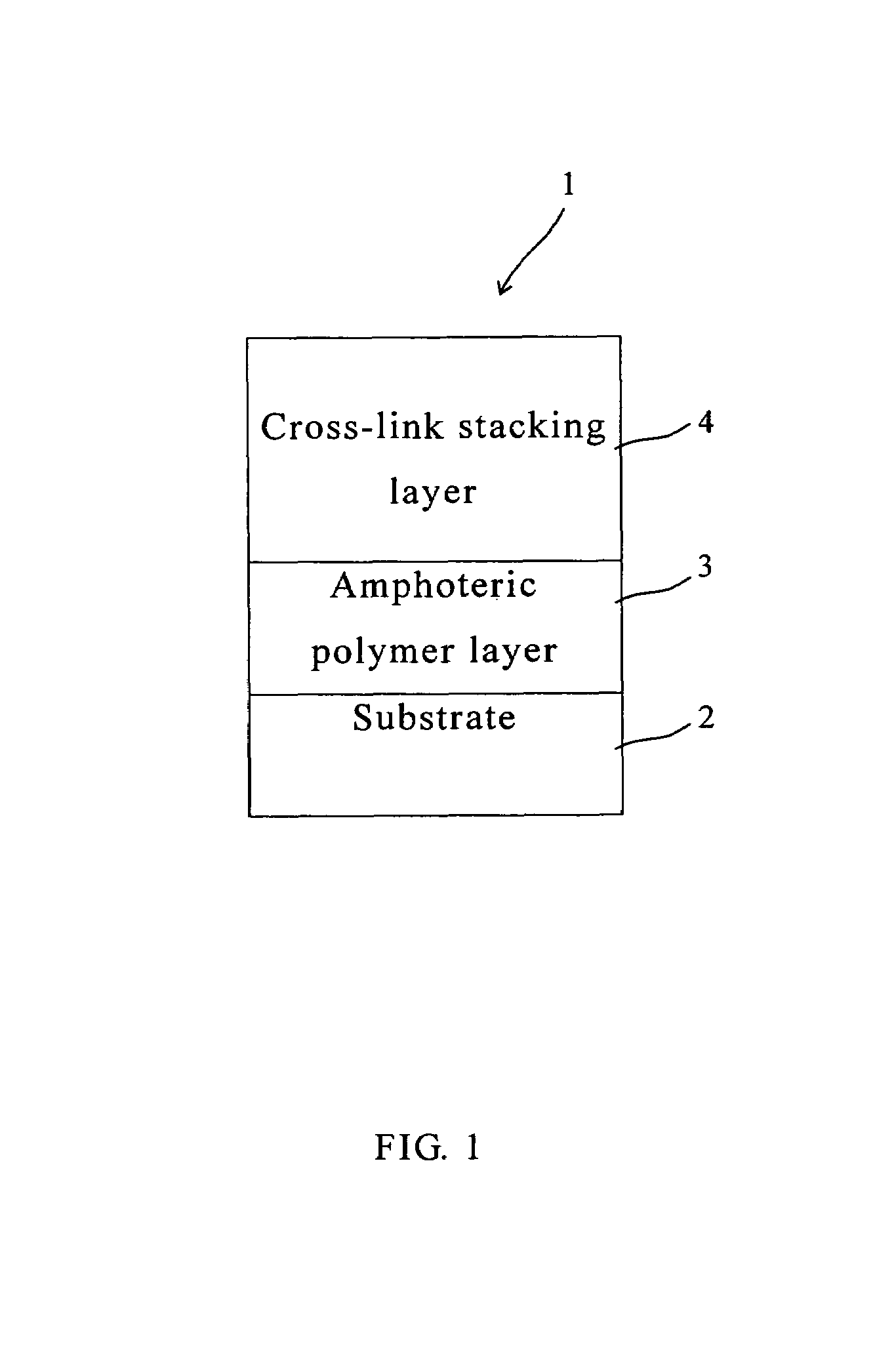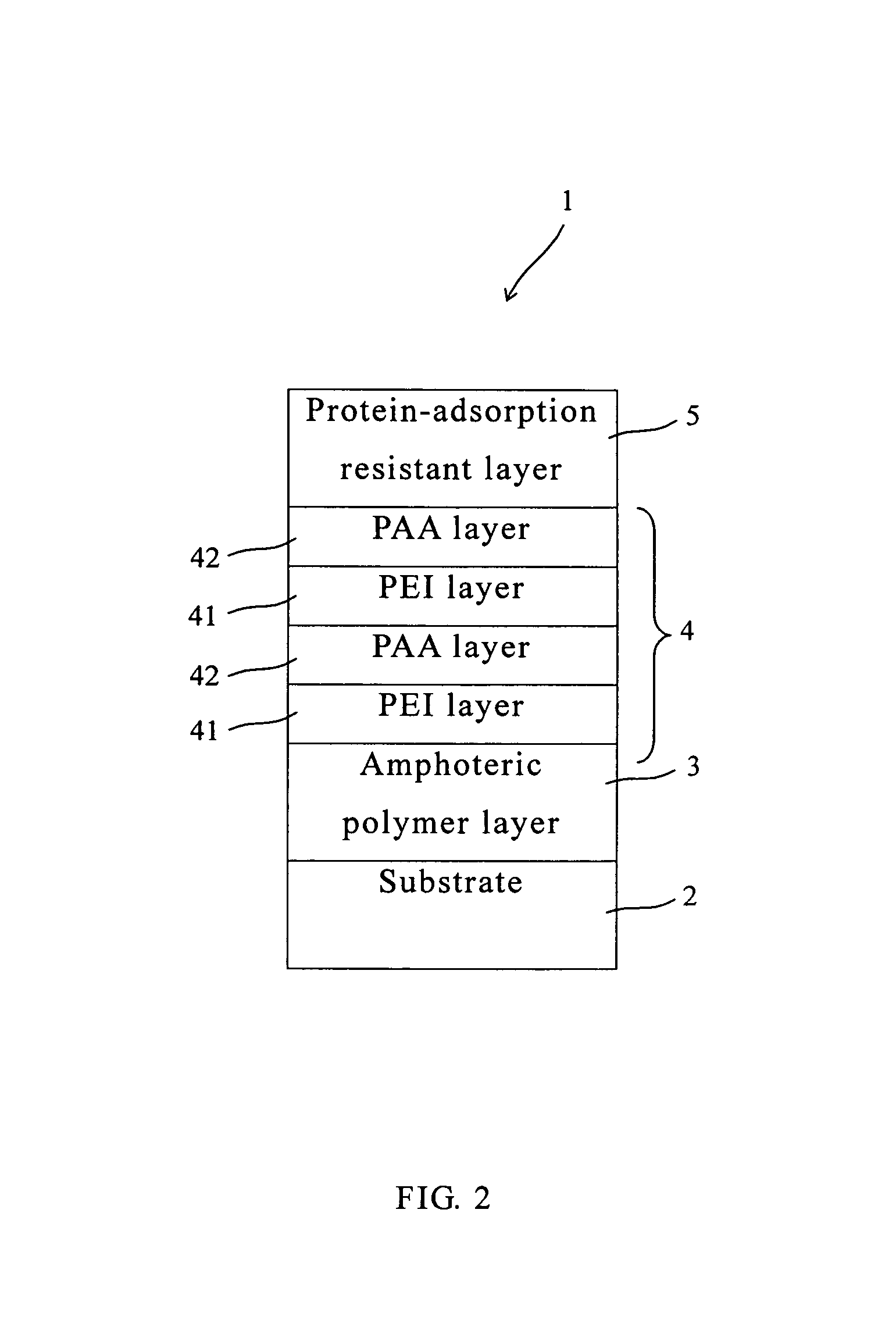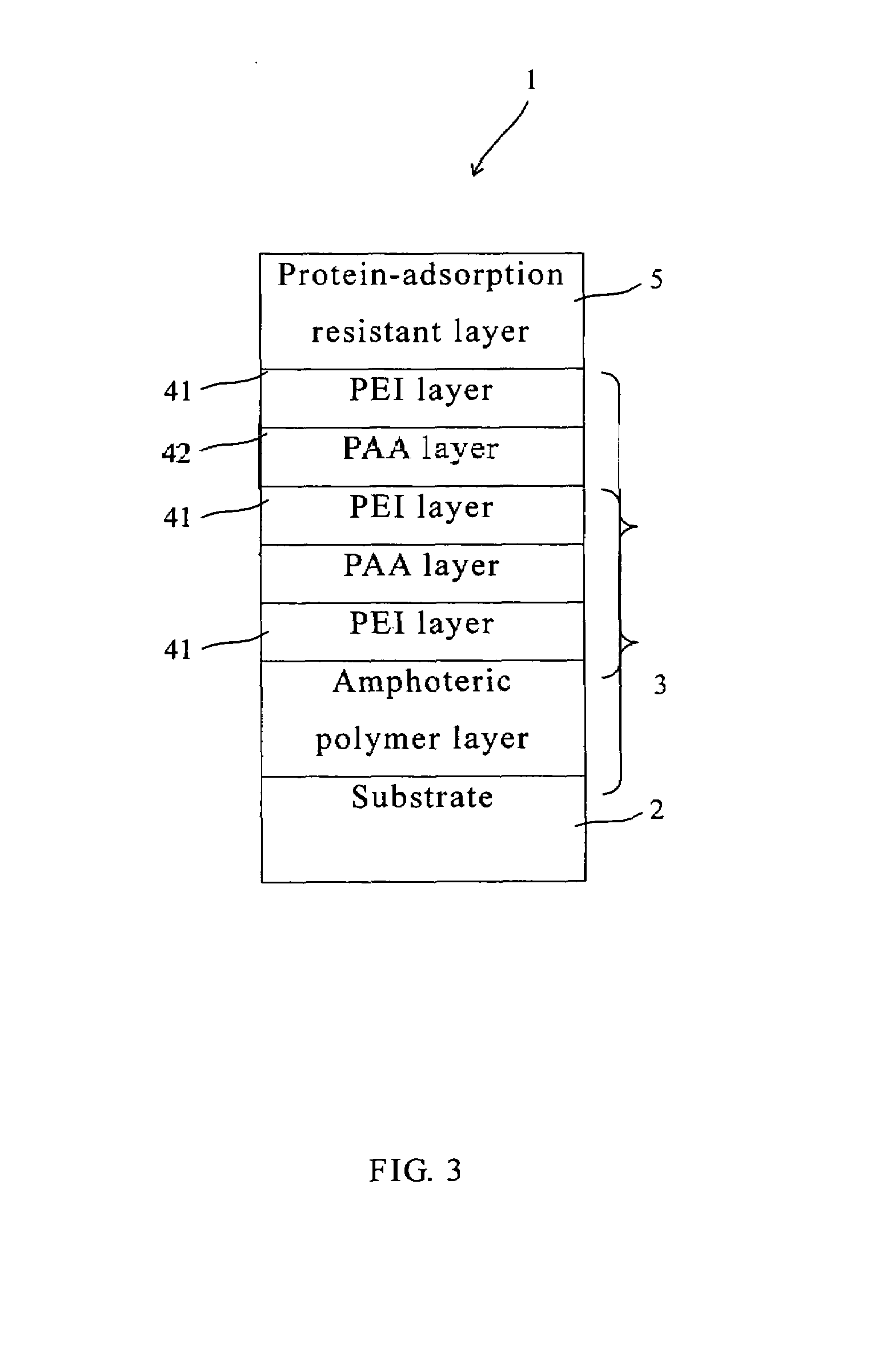Long-term hydrophilic modification of PDMS substrate and method for manufacturing the same
a technology of hydrophilic modification and pdms, which is applied in the direction of water-setting substance layered products, synthetic resin layered products, transportation and packaging, etc., can solve the problems of substrate instability, limited application of dimethylsiloxane pdms and similar materials in various fields, and achieve the effect of resisting protein adsorption
- Summary
- Abstract
- Description
- Claims
- Application Information
AI Technical Summary
Benefits of technology
Problems solved by technology
Method used
Image
Examples
example 1
The Preparation and Modification of the Substrate Surface
[0035]The present example applies PDMS as the substrate material. The preparation of PDMS polymer from monomers is prior art and will not be elaborated. The procedure for modifying substrate surface is as follows: Subject the PDMS substrate obtained to one minute of cleaning and activation with oxygen plasma, then leave the PDMS substrate in PSMA solution overnight and a PSMA layer (amphiphilic polymer layer) will form on the PDMS substrate surface. Subsequently, leave the PDMS substrate in PEI solution for one hour and a PEI layer will form on the PSMA layer. Next leave the PDMS substrate in PAA solution for one hour, and a PAA layer will form over the PEI layer. Repeat the steps of PEI and PAA layer formation as many times as desired. In the formation of each layer, use de-ionic water to rinse the layer surface.
[0036]To initiate the cross-linked reaction, the substrate prepared above is soaked in EDC / NHS solution at 4° C. ov...
example 2
The Preparation and Modification of the Substrate Surface, which is Provided with Immobilized Protein
[0042]Take PDMS substrate and repeat the step of forming PEI / PAA stacking layer in Example 1 until the desired number of layers is reached. Subsequently, undergo reductive amination or aldehyde condensation for protein immobilization. In the example of aldehyde condensation, after the step of cross-linked stacking layer formation is completed, premix PEG dialdehyde and the protein to let the aldehyde group in protein react with the aldehyde group on PEG. Next let the premix solution react with the amino group on cross-linked stacking layer and soak the substrate in H3PO4 / K2SO4 buffer solution of sodium cyanoborohydride overnight to proceed with cross-linked reaction. Finally, protein is immobilized on the substrate surface. In this example, hemoglobin antibody was immobilized on PEG modified microchannel surface. For assay, hemoglobin antigen was injected into microchannels. After 30...
PUM
| Property | Measurement | Unit |
|---|---|---|
| hydrophilic | aaaaa | aaaaa |
| amphiphilic | aaaaa | aaaaa |
| hydrophobic | aaaaa | aaaaa |
Abstract
Description
Claims
Application Information
 Login to View More
Login to View More - R&D
- Intellectual Property
- Life Sciences
- Materials
- Tech Scout
- Unparalleled Data Quality
- Higher Quality Content
- 60% Fewer Hallucinations
Browse by: Latest US Patents, China's latest patents, Technical Efficacy Thesaurus, Application Domain, Technology Topic, Popular Technical Reports.
© 2025 PatSnap. All rights reserved.Legal|Privacy policy|Modern Slavery Act Transparency Statement|Sitemap|About US| Contact US: help@patsnap.com



